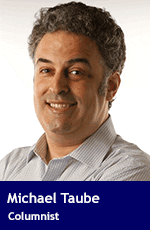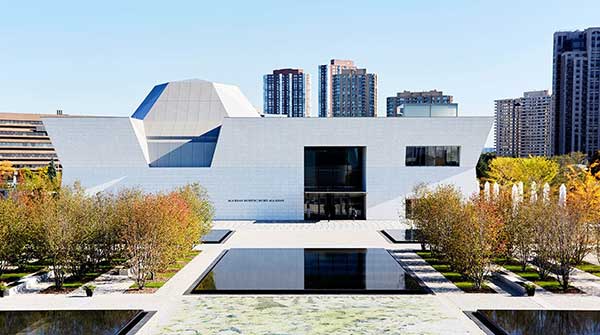A few twists of fate gave the city something it can treasure forever: the Aga Khan Museum
 When people come to visit the city I live in, Toronto, the recommended destination spots are typical ones. The CN Tower, Royal Ontario Museum, Art Gallery of Ontario, Casa Loma, Distillery District, Rogers Centre, Scotiabank Arena, Roy Thomson Hall, Ontario Science Centre, Chinatown and Little Italy, just to name a few.
When people come to visit the city I live in, Toronto, the recommended destination spots are typical ones. The CN Tower, Royal Ontario Museum, Art Gallery of Ontario, Casa Loma, Distillery District, Rogers Centre, Scotiabank Arena, Roy Thomson Hall, Ontario Science Centre, Chinatown and Little Italy, just to name a few.
A more recent addition to the list is the Aga Khan Museum. It has become, in many ways, the crown jewel of a museum in Toronto.
Ironically, it almost wasn’t.
The original plan was to construct the museum in London, England. A 2001 attempt to purchase a medical college site near Tate Britain was unsuccessful. A $60 million bid for a location on the River Thames was announced the following year. It would have been situated next to the Church of England – and a hop, skip and a jump from Parliament.
 |
| Related Stories |
| Canadian Museum for Human Rights must rediscover its mission
|
| Helen Keller’s birthplace stirs the senses
|
| Alabama museum pays tribute to the father of the blues
|
King’s College London, which was “cash strapped” at the time, would have received the money “for a vacant section of land it owned adjacent to St. Thomas’s Hospital,” according to James Adams’s Oct. 11, 2002, Globe and Mail article. The college later depicted the bid as an “unsolicited offer.” Politicians, doctors and others felt it should be used for medical purposes rather than “asset-stripping.” While space would have reportedly been made for medical facilities, St. Thomas’s lower offer was ultimately accepted.
The Aga Khan then focused on Toronto. He purchased Bata Shoes’ head office, valued at $10 million. It was adjacent to a property he had bought in 1999 to build a centre based on his Ismaili Muslim faith.
The museum’s foundation ceremony, which involved then-Prime Minister Stephen Harper, occurred in May 2010. It was officially opened in September 2014.
I met the Aga Khan in Ottawa. We had lightly discussed this project, among other more sundry items. While I obviously didn’t know what the museum would become, I had a sense of what he envisioned it could be. (I also saw some early photos through Rosemina Nathoo. She worked for the Harper government when I did and later served as the museum’s senior advisor and in-house counsel.)
The Ismaili spiritual leader is a kind, decent and intelligent man. Some Canadians are only familiar with him due to Prime Minister Justin Trudeau and his family’s unwise decision to vacation on the private island he owns. It was a clear ethics violation, and the PM was reprimanded. The Aga Khan’s offer wasn’t made with any malicious intent. Trudeau simply should have known better than to accept it.
Putting this controversy aside, the Aga Khan Museum has quickly turned into a must-see destination for visitors. Designed by Japanese architect Fumihiko Maki, it sits next to the Ismaili Centre (designed by Indian architect Charles Correa) and is on a landscaped park devised by Lebanese architect Vladimir Djurovic sculpted in the style of the traditional Islamic courtyard from the Quran, the Charbagh.
When I visited about two weeks ago, it was only the second time I had ever seen the permanent collection. (My wife and I went to the museum several years ago, and returned to go to its restaurant, Diwan.) COVID-19 had played an unfortunate role in my lengthy absence.
I’m pleased to say the collection is still as impressive as before.
There are numerous artifacts from the Arab and Islamic world, including Iran, Iraq, Afghanistan, Turkey, Tunisia and Uzbekistan. There are also antiquities from Spain, Italy, India, Pakistan and North Africa. Several items are linked directly to the Christian and Jewish faiths, too.
The museum contains mesmerizing examples of the Quran from different historical periods, ranging from simplistic to ornate in design. Various manuscripts, calligraphy and illustrations of everything from flowers to human anatomy are on display. Large and small pieces of architectural design adorn the collection, along with several historical components for visitors to read and learn about.
A large fountain from Cairo, Egypt made of marble and sandstone is impossible to miss. A marble capital from Spain with Greek influences, and a porcelain ablution basin from China, are prominently displayed. A selection of metalwork with priceless brass, copper and bronze pieces can be found throughout the collection. A wide variety of bowls, vases and various household items are in glass cases for all to see.
Meanwhile, the Bellerive Room showcases part of the ceramics collection of the late Prince Sadruddin Aga Khan and Princess Catherine Aga Khan, along with a small sitting area and library. There’s a gift shop (where I purchased a museum guide), a courtyard cafe and rooms for meetings, musical performances and the like.
Although Toronto came close to never having the Aga Khan Museum, a few twists of fate gave the city something it can treasure forever. Life does work in mysterious ways.
Michael Taube, a Troy Media syndicated columnist and Washington Times contributor, was a speechwriter for former prime minister Stephen Harper. He holds a master’s degree in comparative politics from the London School of Economics.
For interview requests, click here.
The opinions expressed by our columnists and contributors are theirs alone and do not inherently or expressly reflect the views of our publication.
© Troy Media
Troy Media is an editorial content provider to media outlets and its own hosted community news outlets across Canada.


